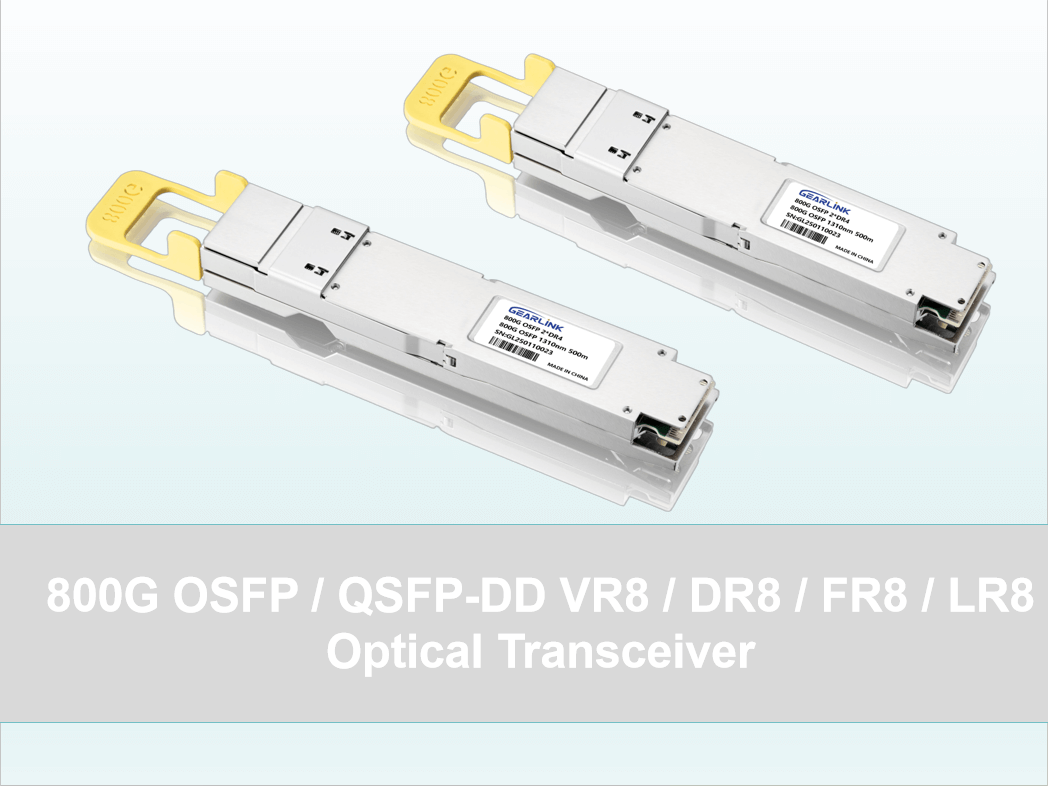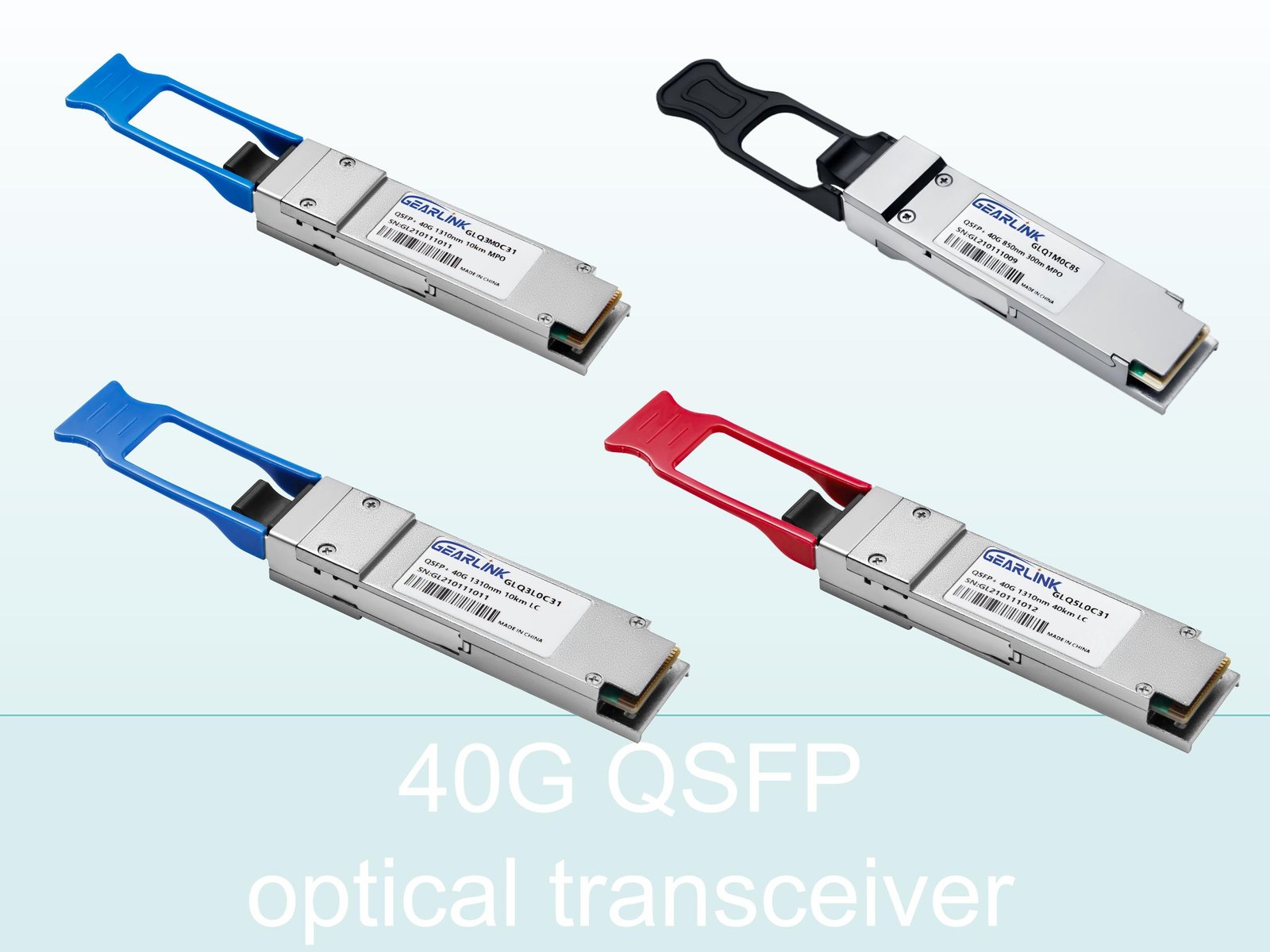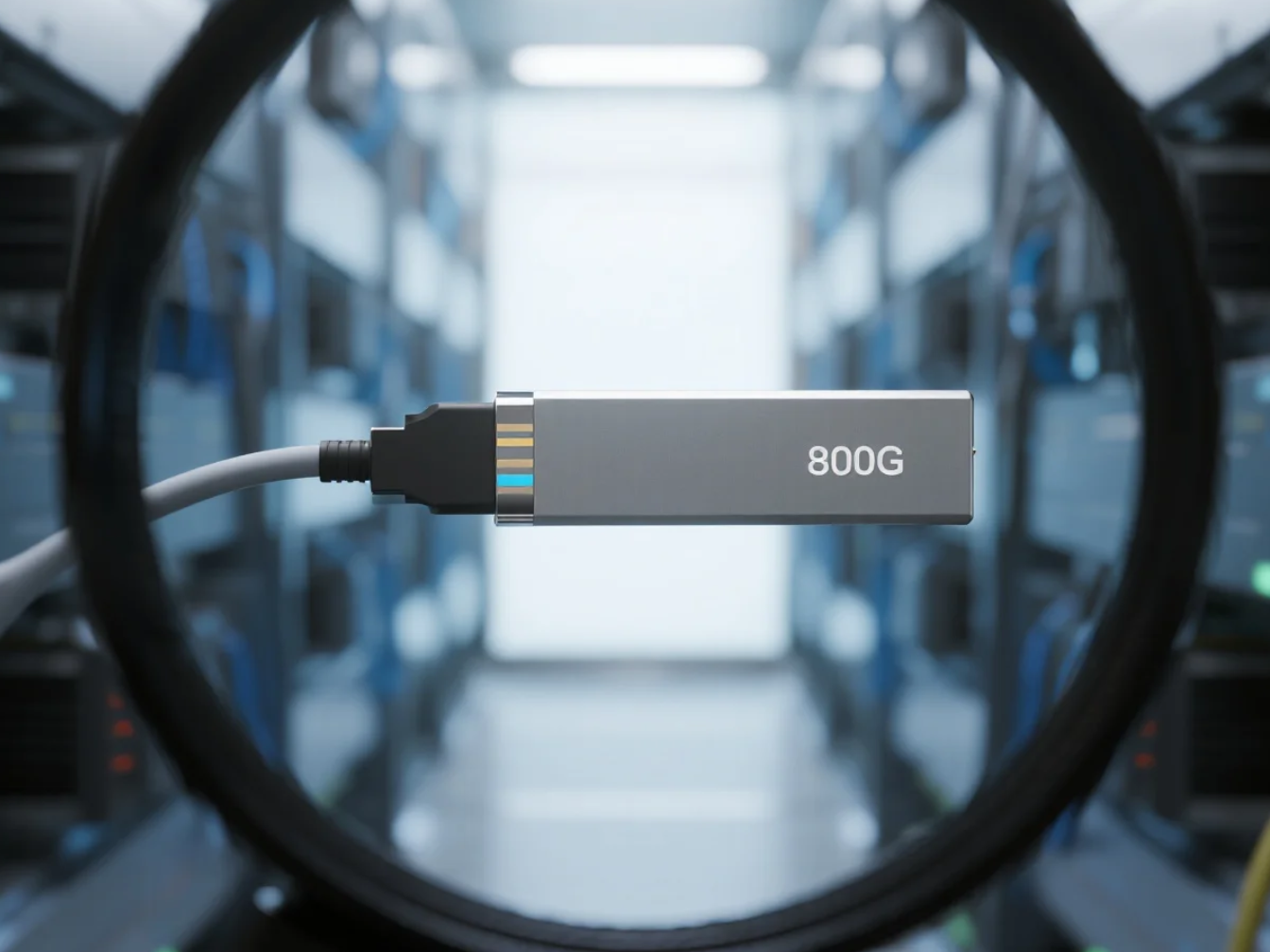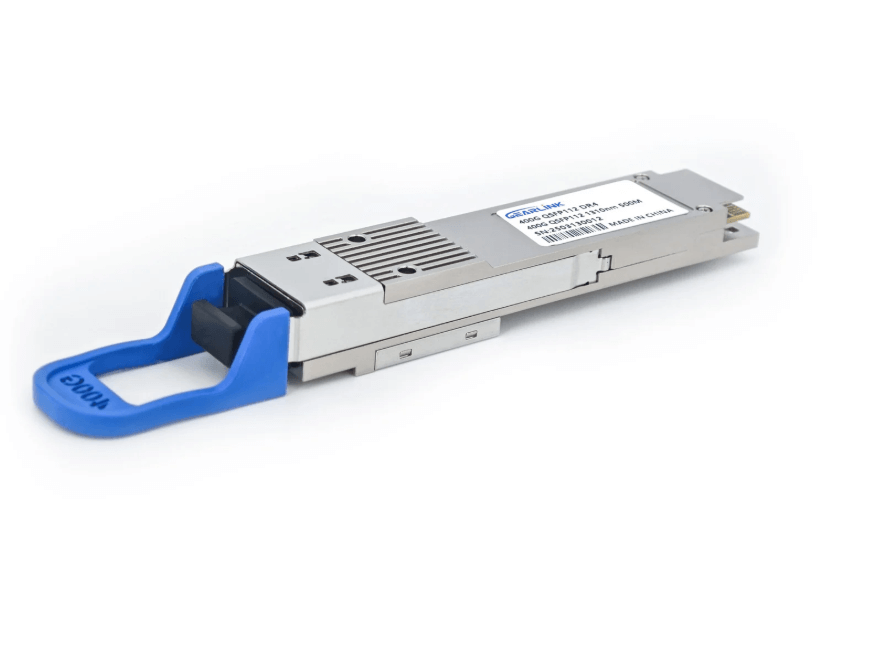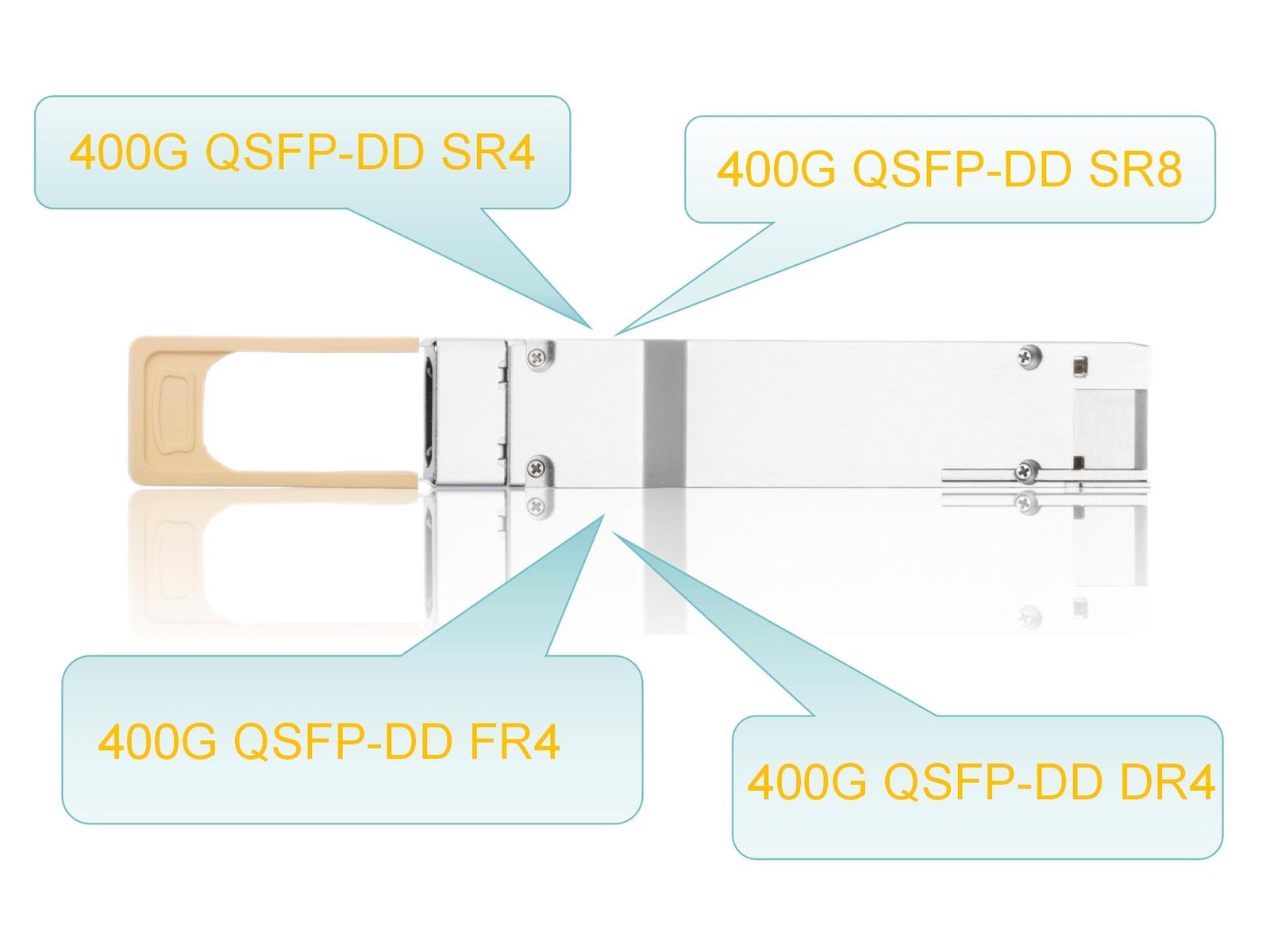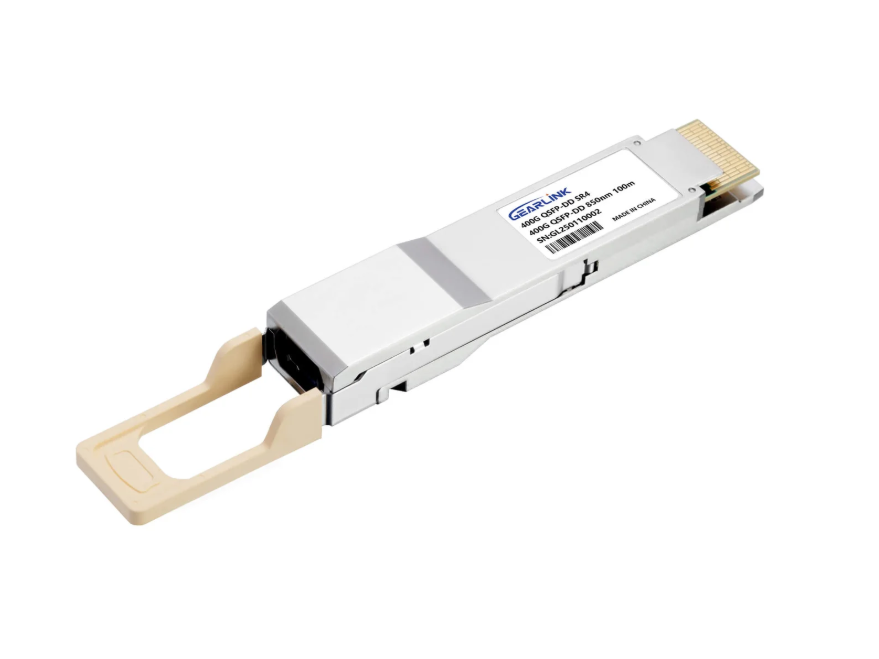The global data center landscape is currently being propelled into the 800G era, driven by the explosive growth of AI computational demands and continuous cloud service evolution. Faced with surging bandwidth requirements and increasingly stringent power efficiency challenges, the selection of optical transceivers that deliver high performance, low power consumption, and flexible deployment has become critical. A complete ecosystem of 800G solutions has now been established, providing essential support for the upgrade of computational infrastructure. Central to this ecosystem are advanced 800G optical transceiver technologies, enabling the next leap in connectivity.
The Technological Imperative: Why 800G?
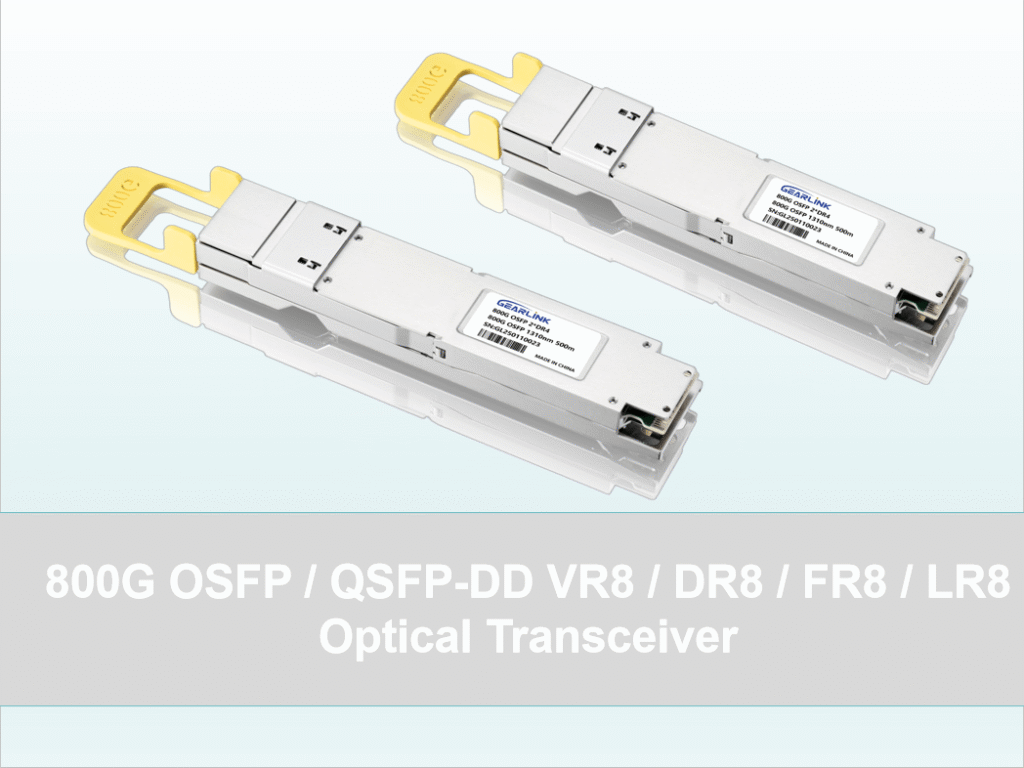
The transition to 800G represents a fundamental shift driven by several key advantages:
Bandwidth Leap: A doubling of single-module transmission speed compared to 400G solutions is achieved. This capacity is essential for supporting terabit-level (Tb/s) interconnect demands inherent in AI training clusters, supercomputing centers, and hyperscale cloud environments.
Power Efficiency Revolution: Significant power savings exceeding 30% over earlier generation solutions are realized. This is primarily enabled by the adoption of PAM4 (Pulse Amplitude Modulation 4-level) signaling and sophisticated photonic integration techniques, reducing the operational expenditure and cooling burden within dense data centers.
Density Upgrade: Compatibility with established OSFP (Octal Small Form Factor Pluggable) and QSFP-DD (Quad Small Form Factor Pluggable Double Density) form factors is maintained. Consequently, a remarkable 200% increase in bandwidth density per rack unit is facilitated, optimizing valuable data center real estate and simplifying cabling infrastructure.
The 800G Product Matrix: Enabling End-to-End Connectivity
A comprehensive family of 800G optical transceiver solutions has matured within the industry, addressing diverse deployment scenarios:
1. Short-Reach, High-Efficiency Interconnect (≤500m)
Primary Solutions: 800G OSFP DR8, 800G QSFP-DD800 DR8
Key Parameters: Transmission over 500m of single-mode fiber is supported; power consumption is maintained below 16W; high-performance EML (Electro-absorption Modulated Laser) lasers are utilized.
Core Scenarios: These transceivers are predominantly deployed for Top-of-Rack (ToR) switch-to-server interconnects and within high-bandwidth server clusters.
Distinct Advantage: Ultra-low latency performance is delivered, which is critical for meeting the real-time processing requirements of High-Performance Computing (HPC) and AI workloads. The 800G OSFP DR8 is particularly noted for its reliability in these demanding environments.
2. Medium-to-Long Reach Backbone (2km~10km)
Primary Solutions: 800G OSFP DR8+, 800G OSFP DR8++, 800G QSFP-DD800 DR8+
Enhanced Capabilities: Transmission distances ranging from 2km to 10km are enabled; dual MPO-12 connectors are often featured; compliance with the IEEE 802.3cu standard is guaranteed.
Technical Breakthrough: The 800G OSFP DR8++ variant achieves 10km transmission over single-mode fiber, effectively replacing the need for complex and costly multi-module cascading configurations traditionally used for such distances.
Scenario Adaptation: These solutions are ideally suited for campus core networks and metropolitan Data Center Interconnect (DCI) links.
3. Cost-Effective Multimode Fiber Deployment
Primary Solutions: 800G OSFP VR8, 800G QSFP-DD VR8
Core Technology: A combination of VCSEL (Vertical-Cavity Surface-Emitting Laser) arrays and PAM4 modulation is employed, operating at 106.25Gbps per lane.
Value Proposition: Exceptional cost efficiency is offered; connectivity over 100m of OM4 multimode fiber is supported, with power consumption kept below 15W.
Deployment Focus: The 800G OSFP VR8 is a key enabler for enterprise data room modernization projects and the cost-effective upgrade of existing infrastructure utilizing multimode fiber cabling.
4. Wavelength Division Multiplexing (WDM) Solutions
Primary Solutions: 800G OSFP 2xFR4, 800G OSFP 2xLR4
Innovative Design: Dual-channel CWDM (Coarse Wavelength Division Multiplexing) technology is implemented, multiplexing eight wavelengths onto a single fiber strand.
Core Value: Up to 70% of precious fiber resources are conserved, significantly reducing cabling complexity and associated costs.
Application Domains: These solutions are essential for high-density data center environments and carrier-grade WDM transport networks requiring efficient fiber utilization.
5. Coherent Transmission Technology
Primary Solution: 800G OSFP ZR DCO (Digital Coherent Optics)
Technical Breakthrough: An integrated coherent DSP (Digital Signal Processor) is incorporated, supporting the OpenZR+ interoperability standard.
Extended Reach Capability: Single-wavelength 800G transmission exceeding 80km is achieved, with robust performance maintained at an OSNR (Optical Signal-to-Noise Ratio) tolerance of ≤25.5dB.
Architectural Revolution: Traditional, bulky OTN (Optical Transport Network) equipment can be replaced, enabling significantly simplified and more cost-effective DCI architectures.
Comparative Selection Guide: Optimizing Choice Across Four Dimensions
The optimal 800G optical transceiver is selected based on specific application requirements. Key considerations are summarized below:
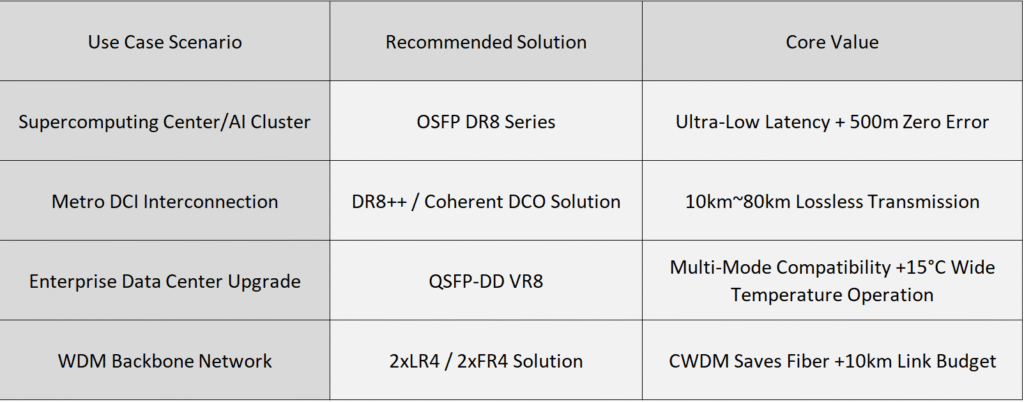
Industry Technology Trends
The trajectory of 800G optical transceiver development is being shaped by several key trends:
Chip-Level Innovation: Breakthroughs in power efficiency are continuously being driven by the co-optimization of EML/VCSEL laser components and advanced DSP silicon.
Interface Standardization: The OSFP and QSFP-DD form factors, governed by Multi-Source Agreements (MSAs), are being solidified as the dominant interface standards for high-density 800G deployments.
Green Transformation: Leading solutions are engineered to consume ≤16W, and compliance with stringent environmental regulations like RoHS (Restriction of Hazardous Substances) is now standard.
Intelligent Operations: Predictive maintenance capabilities are enabled through real-time monitoring via I2C interfaces and Digital Diagnostic Monitoring (DDM), enhancing network reliability and reducing downtime.
Conclusion
Against the backdrop of global computational competition and strategic initiatives like China’s “East Data West Computing” project, 800G optical transceivers have undeniably become the core engine powering next-generation digital infrastructure. The maturation of diverse solutions – including the cost-effective 800G OSFP VR8 for enterprise upgrades, the ultra-low latency 800G OSFP DR8 for HPC/AI clusters, and the extended reach DR8++ and coherent ZR variants for DCI – signifies the achievement of true end-to-end, high-speed network coverage. This comprehensive 800G optical transceiver matrix propels the evolution of ultra-high-speed networks towards unprecedented levels of efficiency and sustainability. The technological inflection point is here; leadership in the 800G era is seized by those who strategically deploy these transformative optical engines.
